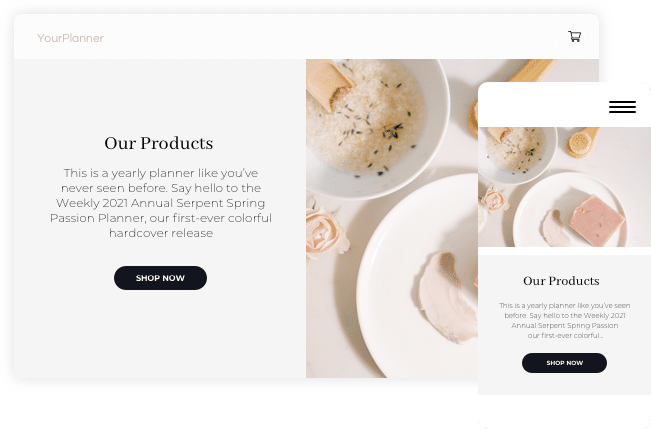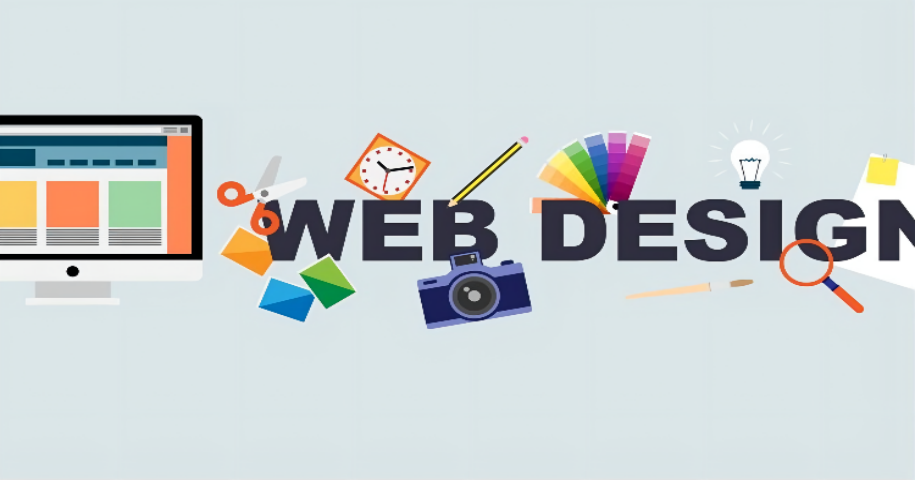Stick out from the Competition: Companion with a Top Web Design Agency
Stick out from the Competition: Companion with a Top Web Design Agency
Blog Article
Discover the Different Kinds Of Website Design Provider for Your Unique Requirements
From receptive web design that adapts to different tools, to ecommerce internet layout that drives online sales, to customer experience (UX) design that enhances consumer satisfaction, to personalized web design that brings your vision to life-- the opportunities are limitless. Whether you're a little business owner looking to establish an on-line visibility or a business owner aiming to transform the mobile app globe, this discussion will certainly drop light on the various types of web layout solutions available, assisting you make an informed choice that lines up with your goals.
Responsive Website Design
Receptive website design is an essential element of modern-day web advancement that makes sure internet sites adjust and present flawlessly throughout different gadgets and screen dimensions. With the enhancing usage of mobile phones, tablets, and various other mobile devices, it has actually come to be important for sites to be available and user-friendly on any kind of display.
Responsive website design utilizes a mix of flexible grids, designs, photos, and CSS media inquiries to attain this flexibility. It permits the site to immediately readjust its format and content based on the device's display size, alignment, and resolution (website design company). This suggests that customers can access the web site on their computer, laptops, tablets, or mobile phones without experiencing any type of problems or having to focus or out to check out the content effectively

E-commerce Website Design

With the enhancing need for on-line shopping, services are now concentrating on shopping website design to develop user-friendly and visually attractive web sites that drive sales and enhance the client purchasing experience. Ecommerce website design encompasses various elements such as layout, navigation, item display, and check out procedure optimization. These aspects are essential for bring in and retaining customers, in addition to enhancing conversion prices.
A reliable e-commerce website design begins with an efficient layout that enables users to quickly find the product and services they are trying to find. Instinctive and clear navigating food selections, search bars, and filtering options are important for a smooth browsing experience. Furthermore, the product screen ought to display high-quality photos, in-depth summaries, and customer reviews to construct trust and self-confidence in the item.
Furthermore, the checkout process need to be maximized for simpleness and convenience. A secure and structured settlement gateway, together with multiple repayment options, guarantees a smooth purchase for the customer. In addition, including functions such as visitor check out, order tracking, and personalized referrals can improve the general shopping experience.
Individual Experience (UX) Style
User Experience (UX) Layout plays a crucial function in creating straightforward and interesting sites that prioritize the demands and preferences of the target audience. When engaging with an internet site or application, it involves making and enhancing the overall experience that individuals have. UX developers intend to enhance user satisfaction by improving the usability, access, and performance of the site.

UX designers concentrate on producing user-friendly navigating, clear and succinct web content, and visually enticing interfaces. They make sure that the internet site is very easy to navigate and recognize, guaranteeing a seamless and pleasurable customer experience.
In addition to improving functionality, UX layout also takes into consideration the emotional facet of customer experience. Designers intend to evoke positive emotions through visual aspects, such as shades, typography, and imagery, which add to the general customer complete satisfaction.
Personalized Website Design
Personalized internet design involves producing custom-made and distinct websites that are particularly created to fulfill the private needs and requirements of a business or company. Unlike pre-designed design templates or generic web site styles, custom website design offers a tailored technique that shows the brand name identity, values, and goals of the customer.
With custom web style, every element of the internet site is meticulously crafted to straighten with the client's goals. This consists of the layout, shade system, typography, pictures, and overall user experience. The layout process begins with a detailed understanding of the client's organization and target audience, permitting the web designer to establish a web site that efficiently connects the customer's message and involves users.
Among the essential advantages of custom-made website design is its adaptability. As the web site is constructed from the ground up, go to my site the internet developer has full control over its capability and functions. This makes it possible for the combination of any type of wanted customizations, such as ecommerce functionality, material administration systems, or interactive components.
Additionally, personalized internet layout ensures that the web site is optimized for search engines, making it a lot more visible to potential clients. By implementing search engine optimization finest methods, such as correct keyword positioning and meta tags, the internet site can attain greater rankings in search engine outcomes.
Mobile App Layout
Mobile application layout includes creating aesthetically enticing and straightforward interfaces for applications that are especially created for mobile phones. With the boosting appeal of tablet computers and smartphones, mobile application style has actually become a critical facet of electronic product advancement.
.png)
Aesthetic charm is likewise crucial in mobile app style. Making use of colors, typography, and images can develop an aesthetically pleasing user interface that records the customer's attention and enhances their overall experience. Additionally, integrating brand elements and preserving consistency with the company's aesthetic identification can help establish a solid brand presence within the app.
Mobile application layout likewise involves taking into consideration different technological elements, such as device compatibility, responsiveness, and efficiency optimization - web design company. It is important to make sure that the app works flawlessly across various tools and operating systems, giving a regular experience to all individuals
Final Thought
Receptive web layout makes certain a seamless experience throughout various gadgets, while e-commerce web style focuses on producing online purchasing platforms. Custom internet layout provides customized solutions to meet certain requirements, while mobile app style concentrates on read this producing easy to pop over to this web-site use mobile applications.
From receptive web design that adapts to different devices, to e-commerce web style that drives on the internet sales, to customer experience (UX) design that enhances customer fulfillment, to personalized web style that brings your vision to life-- the opportunities are limitless.An efficient shopping internet style starts with an efficient layout that permits individuals to conveniently discover the items or solutions they are looking for. The style procedure starts with an extensive understanding of the customer's company and target audience, permitting the internet developer to establish a web site that efficiently interacts the client's message and engages users.
Receptive internet style guarantees a seamless experience throughout different gadgets, while ecommerce internet layout concentrates on producing on-line shopping platforms. Personalized web layout offers customized services to meet certain demands, while mobile application layout concentrates on developing straightforward mobile applications.
Report this page